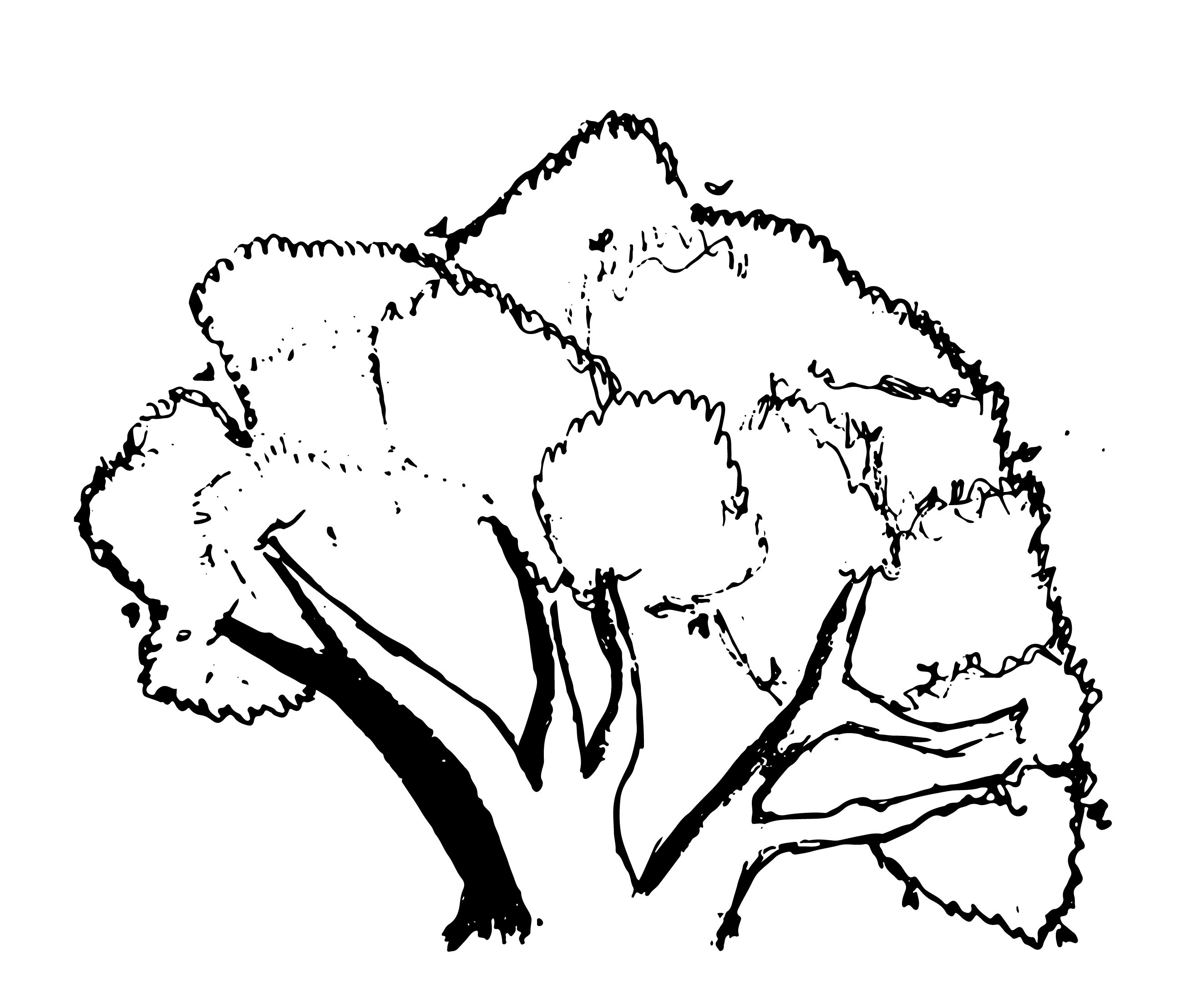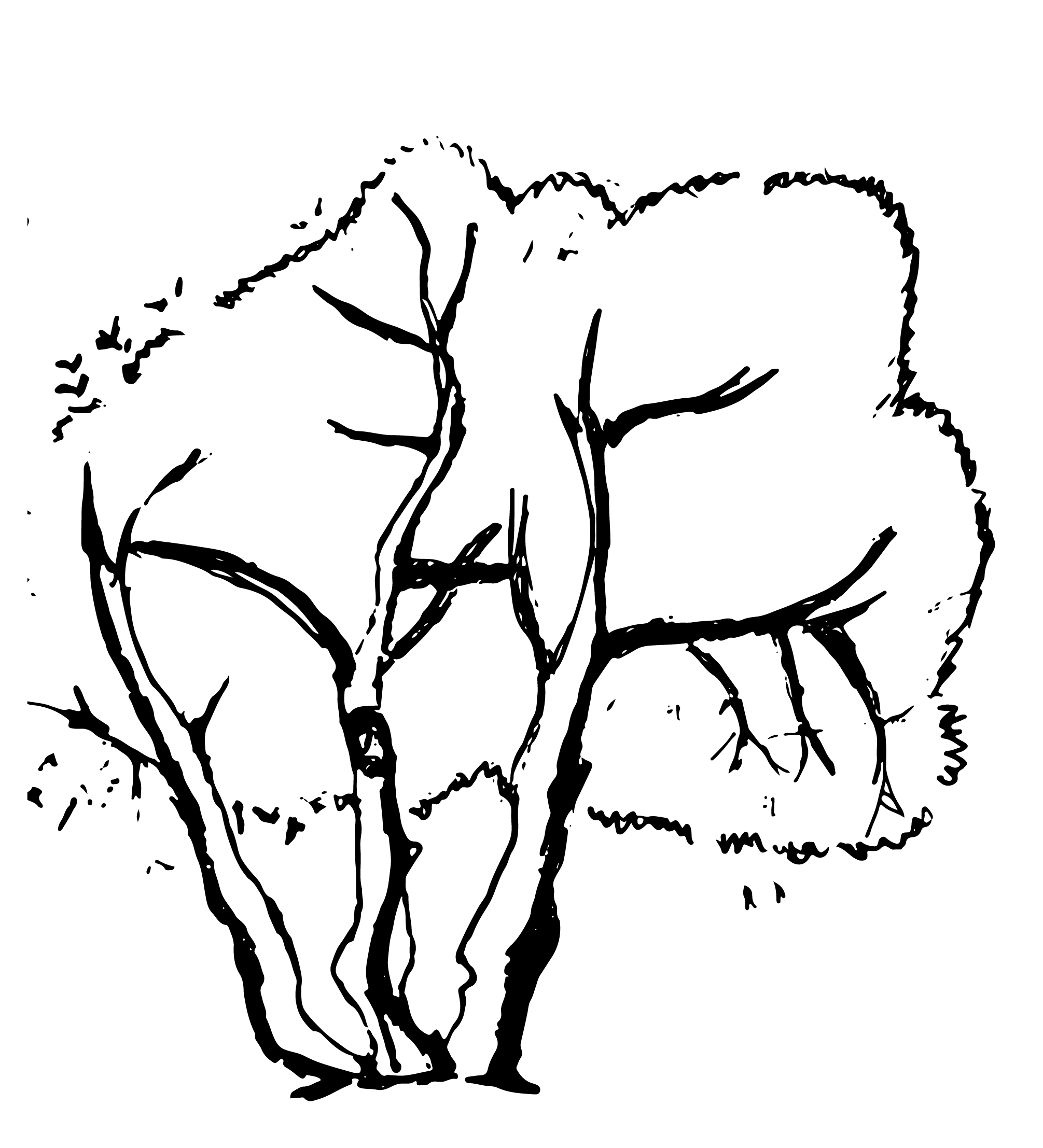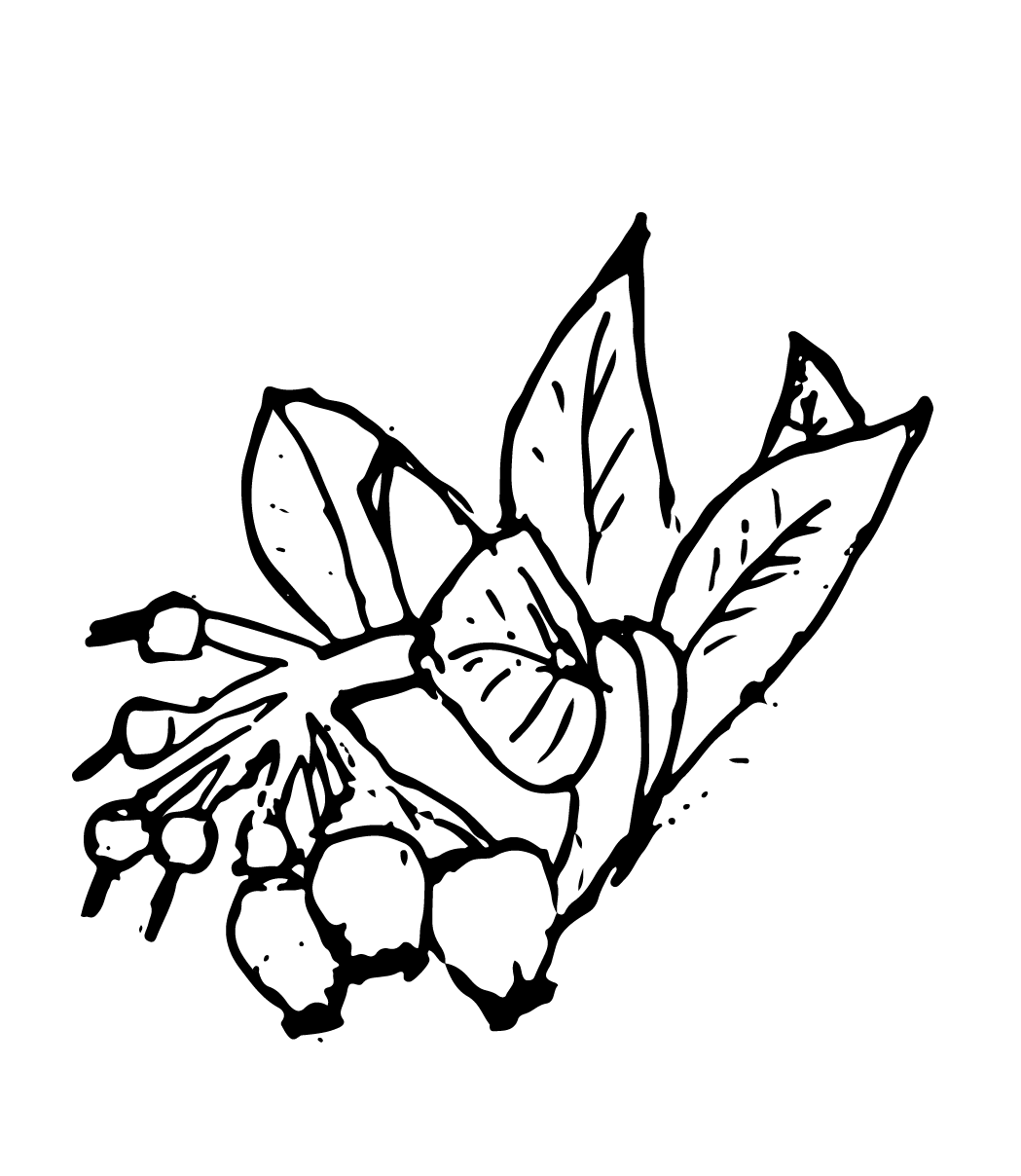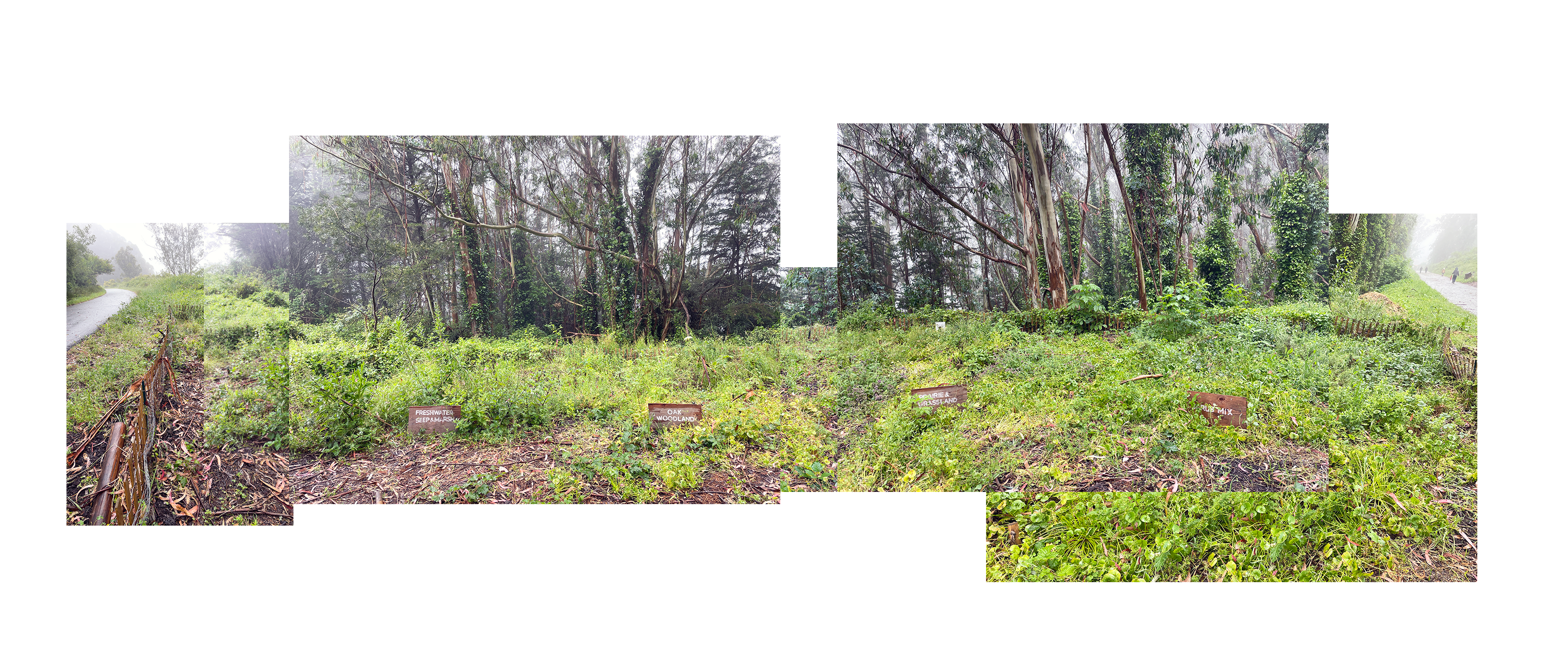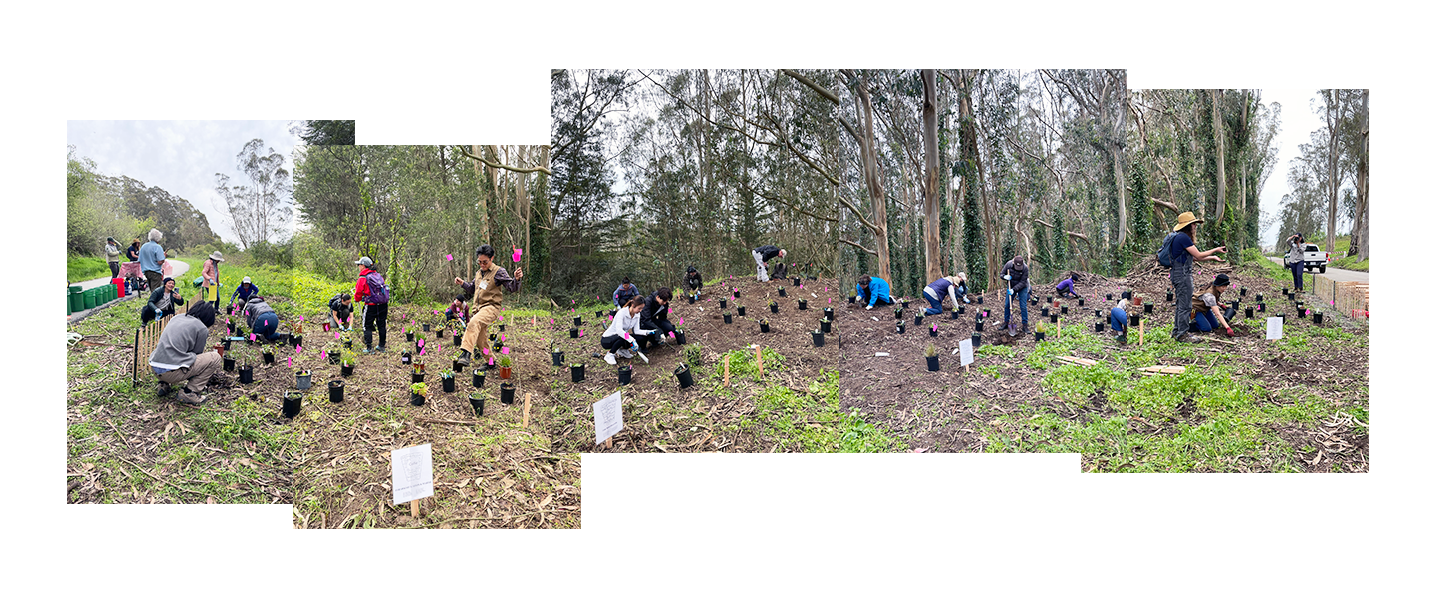San Bruno Test Plot
By Jen Toy
DATE: March 31 2025
TIME: noon-1pm
TEMP: 53 degrees
︎WEATHER: Sunny
WIND (SPEED/DIRECTION): not noticeable
SOIL MOISTURE: Damp with lots of insects under the eucalyptus debirs
︎PLANTS SIGHTINGS: I didn’t have a lot of time so I just did a visual survey of the most noticeable plants. I did not go hunting under the rooreh and weeds to search for small plants.
︎WEED SIGHTINGS: The weeds have been left to grow since the December workday.
WILDFLIFE SIGHTINGS: When you pull out weeds, you’ll see a scattering of insects that are thriving in the leaf litter. I didn’t have time to ID.
︎HUMAN ACTIVITY: As usual, there were many walkers out on the path.
The plot is now two years old. It was first planted in March 2023. For the first year, we hosted monthly workdays (11 in total), weeding the oxalis, rattlesnake grass, ivies and himalayan blackberry. For the second year, we have intentionally done very little management. I’ve been interested to see which plants thrive and can hold their own despite the constant raining down of leaves, bark and branches in allelopathic conditions. Watching this happen, I’ve been contemplating how the test should evolve. Rather than trying to maximize species diveristy, perhaps we should document the species that can take up space and thrive... “the heavy hitters.” I’ve also been thinking about how to measure this. I was initially thinking of this as biomass, but I recently learned that biomass is usually measured by weight of plant material. I think the metric is actually “percent coverage,” though it doesn’t roll off the tongue quite as well. Basically we’re looking for the weedy natives that aren’t fussy or delicate and will take over and self seed with very little work.
︎A note on documentation: This is the first time I’ve been able to photograph the plot since I got a drone. The low canopy of eucalyptus directly above makes it impossible to get an orthographic view of the entire plot. I was able to capture a few oblique angles.
SCRUB MX: On this visit I noticed that the rooreh (miner’s lettuce) is completely dominant. The buckwheat and sagebrush are poking through the rooreh and monkeyflower is hanging on in the back. The self-sown red elderberry is doing great. That’s 4 species, compared to last year when I identified 15 species. At that time the dominant species included beach strawberry, CA fuschia, and miner's lettuce (rooreh). I estimated that 60% of the plot was composed of these 3 species.
PRAIRIE GRASSLAND: This plot is also dominated by the rooreh, though hummingbird sage and phacelia are still thriving. Last year I noticed 12 species, including clear winners CA phacelia, hummingbird sage, and woodland strawberry.
OAK WOODLAND: This visit I noticed the cow parsnip has remerged, and the snowberry, honeysuckle, buckeye, pearly everlasting and mugwort and strawberry are still present (7 species). The cinquefoil and heucheras have not made it thorugh, buried under the rooreh and weeds. Last year, I documented 19 species, including Symphoricarpos sp., Pink honeysuckle, buckeye, pearly everlasting and mugwort, woodland strawberry, sticky cinquefoil, and heucheras.
SEEP/FRESHWATER MARSH: Last year there were 16 species and the clear winner was Bee plant. This is still true, though the dogwood, fringecups, goldenrod and rush are still thriving (5 species).
WEEDS: The oxalis is largely gone (more present in the oak woodland and scrub plots). No cape or english ivy and very little himalayan blackberry. Pretty impressive for only 2 seasons of hand weeding. These species are still hugely dominant outside the plot fence. Other species that I noticed include bur chevril, common sow thistle, hordeum, cut leaf geranium, sheep sorrel and galium.
HAPPY BIRTHDAY TO THE SAN BRUNO PLOT!
San Bruno Mountain Test Plot
By Jen Toy
Test Plot Lead
DATE: May 25 2024
TIME: 10am-1pm
TEMP: 52 degrees
︎ WEATHER: Foggy and drizzling but ended with some blue skies
SOIL MOISTURE: Damp at surface, noticeably drier an inch or two below surface (last time it rained was May 4th all day).
︎ PLANTS SIGHTINGS: Hard to believe our little plot has only been in the ground for about a year. Read below for our evaluation of the first year!
WEED SIGHTINGS: Most weeds were removed 2 weeks ago at the mother’s day weeding. However there is an abundance of new species. The old culprits oxalis, common fumitory, cutleaf geranium, wild oats and bull thistle were present but much less. The weeds that have taken their place are bur chevril, rattlesnake (quaking) grass, sheep sorrel, hyssop loosestrife.
WILDFLIFE SIGHTINGS: Ari said there was a red breasted bird that was around, but I wasn’t paying attention. Also came across a banana slug, 2 snails and a mouse in the grassland plot.
︎ HUMAN ACTIVITY: Ernest, Victoria, Linda, Ari, Aspen, Jen, Maurius, Andrea came out to volunteer. Some folks out walking on the path, but less due to weather.
︎ Please enjoy the progress pics taken over the year:
San Bruno Mountain Test Plot
By Jen Toy
Test Plot Lead
DATE: May 25 2024
TIME: 10am-1pm
TEMP: 52 degrees
︎ WEATHER: Foggy and drizzling but ended with some blue skies
SOIL MOISTURE: Damp at surface, noticeably drier an inch or two below surface (last time it rained was May 4th all day).
︎ PLANTS SIGHTINGS: Hard to believe our little plot has only been in the ground for about a year. Read below for our evaluation of the first year!
WEED SIGHTINGS: Most weeds were removed 2 weeks ago at the mother’s day weeding. However there is an abundance of new species. The old culprits oxalis, common fumitory, cutleaf geranium, wild oats and bull thistle were present but much less. The weeds that have taken their place are bur chevril, rattlesnake (quaking) grass, sheep sorrel, hyssop loosestrife.
WILDFLIFE SIGHTINGS: Ari said there was a red breasted bird that was around, but I wasn’t paying attention. Also came across a banana slug, 2 snails and a mouse in the grassland plot.
︎ HUMAN ACTIVITY: Ernest, Victoria, Linda, Ari, Aspen, Jen, Maurius, Andrea came out to volunteer. Some folks out walking on the path, but less due to weather.
︎ Please enjoy the progress pics taken over the year:
STEWARDSHIP: Over the last year or so we hosted 11 events including 2 planting days (check out this video), 3 monitoring days, and 2 educational workshops. We engaged 154 volunteers and stewards bringing in local neighbors from Daly City, Colma and South SF as well as the broader Bay Area. One of our key goals has been to welcome and cultivate a stewardship group that reflects the diverse immigrant communities that live around the base of the mountain. These communities have been historically disconnected from the mountain and face high pollution burden. We have worked towards this effort through outreach efforts at KAPWA Gardens at SOMA Philipinas, Lincoln Park Community Center, the Sierra Club and the Summit Shasta Environmental Club. We also developed the Ulap Kollective website, and welcomed our first Test Plot fellow, Victoria Bevington (read about her work here).
BACKGROUND ON THE EUCALYPTUS FOREST: Daily fog rolls in from the rugged coastline, up sandy dunes, and settles among the towering eucalyptus of San Bruno Mountain. Despite their cultural and aesthetic value to the Bay Area landscape, eucalyptus are often saddled with negative associations. The trees are categorized as invasive and pose serious fire risks. The clustering of eucalyptus absorbs nutrients and water as they soar to 300 feet on previously low scrub habitat. Moreover, their oils are associated with allelopathic qualities that inhibit the growth of other plants, and the buildup of leaf litter on the forest floor smothers sensitive vegetation. It would be cost prohibitive to remove all the stands of eucalyptus and many folks love their smell and strongly identify these trees with the Bay Area. For both economic and cultural reasons, these forests will remain a part of this landscape. And because of their perceived limited ecological value and allelopathy, planting in their understory is often not prioritized.
HYBRID APPROACH TO RESTORATION: Our restoration approach, thus, started with the understory. Since the early 2000s local Bay Area precedents like Mt. Sutro and the Presidio have started experimenting with building ecological diversity and habitat amidst the eucalyptus to some success. Inspired by their work, we decided to take on this hybridized approach to habitat restoration - one that weaves ecological function within a “non -native” landscape. The mid/understory zone became our target as it is the zone that provides shelter and habitat for song birds, raptors and many other species. We started with four habitat types that are found on San Bruno Mountain with the question, which plant communites are able to survive/thrive in the conditions of the understory?
![Foggy morning, mother's day 2024]()
PLANTING: Situated along a popular, accesible walking path that starts at the Crocker Gate Trailhead in Daly City, our plot is a half-moon separated into wedges, each planted with a different habitat type found on the mountain: scrub mix, oak woodland, prairie and grassland, and seep/freshwater marsh. When we sampled the existing conditions of the site in February 2023, we found 15 species in total - 13 invasives (mainly Bermuda buttercup, Himalayan blackberry, and European wild oats), and 2 native species (Pacific Blackberry and Miner’s lettuce). In March of 2023 and January 2024 we hosted 2 planting days, installing species grown at Mission Blue Nursery as well cuttings from nearby. As of May 2024, we observed 69 species including 11 invasives and 58 species of native plants - 52 of the 58 species were planted and 6 new species have entered the plot on their own (self-sown by wind, birds, already in the seed bank etc).
FINDINGS: So far, we’ve found an overall species survival rate of 74% across all four habitat types. The best performing habitat type is oak woodland at 88% and the lowest is seep/freshwater marsh at 56%. The original planting list can be found on our website, here. For the details and some pics, keep reading:
BY HABITAT TYPE:
SCRUB MX (77% species survival rate):
There are currently 15 species, including 3 that were self-sown. Dominant species include beach strawberry, CA fuschia, and miner's lettuce. I estimate that 60% of the plot is composed of these 3 species, as it is hard to differentiate individual plants. One coyote brush observed, with extra large leaves. Horkelia and Blue Witch are holding on but they are tiny. Self-sown red eldberry is taking off. We seem to have lost lupines (perhaps because they went in as tiny plugs) and seaside daisy.
PRAIRIE GRASSLAND (60% species survival rate):
There are 12 species, including 3 that were self-sown. CA phacelia, hummingbird sage, and woodland strawberry are clear winners. The Phacelia alone is covering at least 25% of the grassland surface area. One CA fescue is thriving. No Ruby Chalice Clarkia observed but perhaps we missed the window. Need to keep a lookout next spring. These species were not observed: CA Sheepburr, CA dandelion, SF wallflower.
OAK WOODLAND (88% species survival rate):
There are 19 species, including 2 that were self-sown. Snowberry species (Symphocarpus) hard to ID difference between common and creeping. Vigorous patches of pearly everlasting, one plant flowering but others were not. Winners seem to be: Symphoricarpos sp., Pink honeysuckle, lone buckeye is doing well, pearly everlasting and mugwort are spreading, woodland strawberry, sticky cinquefoil, heucheras. These species were not observed: Blue Blossom Ceanothus or Coast Live Oak.
SEEP/FRESHWATER MARSH (53% species survival rate):
There are 16 species, including 1 that was self-sown. Overall species survival rate is lower than other habitat zones at 53%. The clear winner is Bee plant - it is thriving, large and spreading. There were many species not observed that were supposed to have been planted in January such as CA oatgrass, seep monkeyflower, sneezeweed, evening primrose, CA buttercup, yellow eyed grass, fringecups.
![Scophularia californica (Bee plant) in foreground standing tall]()
![]()
![Pearly everlasting]()
![Potentilla anserina]()
![profusive miner's lettuce, with hummingbird sage]()
![Soaproot hanging on]()
MAINTENANCE: We originally intended to trial two different maintenance strategies, where we left half the plot untouched, seeing what could survive despite the continued build up of leaf litter and debris that would surely accumulate. However, we quickly decided to remove the debris every few months because it seemed clear that the plants would be smothered. If we can expand in the future, I’d like to carve out a section where we plant the strongest species and don’t remove the litter.
FUTURE THOUGHTS: So far, we have maintained more species diversity that I originally hoped for. With the removal of annual weeds, many spreading species are thriving, most notably bee plant, CA phacelia, strawberries, mugwort, CA fuschia, miner’s lettuce and hummingbird sage. Larger shrub species have taken off and may continue to thrive if given enough space like red elderberry, Pacific ninebark, honeysuckles, cow parsnip, and even buckeye. As we move into the 2nd and 3rd years, we might start prioritizing biomass over species diversity - the idea being that if we can cultivate a handful of species that can take up space and hold their own against the constant raining down of debris, then we can begin to jumpstart the under and mid story habitat that’s often missing but so important for birds and other wildlife.
BACKGROUND ON THE EUCALYPTUS FOREST: Daily fog rolls in from the rugged coastline, up sandy dunes, and settles among the towering eucalyptus of San Bruno Mountain. Despite their cultural and aesthetic value to the Bay Area landscape, eucalyptus are often saddled with negative associations. The trees are categorized as invasive and pose serious fire risks. The clustering of eucalyptus absorbs nutrients and water as they soar to 300 feet on previously low scrub habitat. Moreover, their oils are associated with allelopathic qualities that inhibit the growth of other plants, and the buildup of leaf litter on the forest floor smothers sensitive vegetation. It would be cost prohibitive to remove all the stands of eucalyptus and many folks love their smell and strongly identify these trees with the Bay Area. For both economic and cultural reasons, these forests will remain a part of this landscape. And because of their perceived limited ecological value and allelopathy, planting in their understory is often not prioritized.
HYBRID APPROACH TO RESTORATION: Our restoration approach, thus, started with the understory. Since the early 2000s local Bay Area precedents like Mt. Sutro and the Presidio have started experimenting with building ecological diversity and habitat amidst the eucalyptus to some success. Inspired by their work, we decided to take on this hybridized approach to habitat restoration - one that weaves ecological function within a “non -native” landscape. The mid/understory zone became our target as it is the zone that provides shelter and habitat for song birds, raptors and many other species. We started with four habitat types that are found on San Bruno Mountain with the question, which plant communites are able to survive/thrive in the conditions of the understory?
PLANTING: Situated along a popular, accesible walking path that starts at the Crocker Gate Trailhead in Daly City, our plot is a half-moon separated into wedges, each planted with a different habitat type found on the mountain: scrub mix, oak woodland, prairie and grassland, and seep/freshwater marsh. When we sampled the existing conditions of the site in February 2023, we found 15 species in total - 13 invasives (mainly Bermuda buttercup, Himalayan blackberry, and European wild oats), and 2 native species (Pacific Blackberry and Miner’s lettuce). In March of 2023 and January 2024 we hosted 2 planting days, installing species grown at Mission Blue Nursery as well cuttings from nearby. As of May 2024, we observed 69 species including 11 invasives and 58 species of native plants - 52 of the 58 species were planted and 6 new species have entered the plot on their own (self-sown by wind, birds, already in the seed bank etc).
FINDINGS: So far, we’ve found an overall species survival rate of 74% across all four habitat types. The best performing habitat type is oak woodland at 88% and the lowest is seep/freshwater marsh at 56%. The original planting list can be found on our website, here. For the details and some pics, keep reading:
BY HABITAT TYPE:
SCRUB MX (77% species survival rate):
There are currently 15 species, including 3 that were self-sown. Dominant species include beach strawberry, CA fuschia, and miner's lettuce. I estimate that 60% of the plot is composed of these 3 species, as it is hard to differentiate individual plants. One coyote brush observed, with extra large leaves. Horkelia and Blue Witch are holding on but they are tiny. Self-sown red eldberry is taking off. We seem to have lost lupines (perhaps because they went in as tiny plugs) and seaside daisy.
PRAIRIE GRASSLAND (60% species survival rate):
There are 12 species, including 3 that were self-sown. CA phacelia, hummingbird sage, and woodland strawberry are clear winners. The Phacelia alone is covering at least 25% of the grassland surface area. One CA fescue is thriving. No Ruby Chalice Clarkia observed but perhaps we missed the window. Need to keep a lookout next spring. These species were not observed: CA Sheepburr, CA dandelion, SF wallflower.
OAK WOODLAND (88% species survival rate):
There are 19 species, including 2 that were self-sown. Snowberry species (Symphocarpus) hard to ID difference between common and creeping. Vigorous patches of pearly everlasting, one plant flowering but others were not. Winners seem to be: Symphoricarpos sp., Pink honeysuckle, lone buckeye is doing well, pearly everlasting and mugwort are spreading, woodland strawberry, sticky cinquefoil, heucheras. These species were not observed: Blue Blossom Ceanothus or Coast Live Oak.
SEEP/FRESHWATER MARSH (53% species survival rate):
There are 16 species, including 1 that was self-sown. Overall species survival rate is lower than other habitat zones at 53%. The clear winner is Bee plant - it is thriving, large and spreading. There were many species not observed that were supposed to have been planted in January such as CA oatgrass, seep monkeyflower, sneezeweed, evening primrose, CA buttercup, yellow eyed grass, fringecups.
MAINTENANCE: We originally intended to trial two different maintenance strategies, where we left half the plot untouched, seeing what could survive despite the continued build up of leaf litter and debris that would surely accumulate. However, we quickly decided to remove the debris every few months because it seemed clear that the plants would be smothered. If we can expand in the future, I’d like to carve out a section where we plant the strongest species and don’t remove the litter.
FUTURE THOUGHTS: So far, we have maintained more species diversity that I originally hoped for. With the removal of annual weeds, many spreading species are thriving, most notably bee plant, CA phacelia, strawberries, mugwort, CA fuschia, miner’s lettuce and hummingbird sage. Larger shrub species have taken off and may continue to thrive if given enough space like red elderberry, Pacific ninebark, honeysuckles, cow parsnip, and even buckeye. As we move into the 2nd and 3rd years, we might start prioritizing biomass over species diversity - the idea being that if we can cultivate a handful of species that can take up space and hold their own against the constant raining down of debris, then we can begin to jumpstart the under and mid story habitat that’s often missing but so important for birds and other wildlife.
EUCALYPTUS (2nd Planting)
San Bruno Mountain Test Plot
By Jen Toy
Test Plot Lead
DATE: January 15, 2024 / Martin Luther King Jr. Day of Service
︎WEATHER: Sunny, blue skies
WIND (SPEED/DIRECTION): not noticeable
SOIL MOISTURE: Damp
︎PLANTS SIGHTINGS: Red Elderberry are self-sowing from outside the plot. There are many along the eucalyptus forest edge.
WEED SIGHTINGS: We identified about 10 weed species. The most prolific has been the oxalis pes-caprae. Others include Interestingly, the cape and english ivy have largely remained along the fence line, outside the plot.
WILDFLIFE SIGHTINGS: Crows joking around in the eucalyptus canopy. Need to pay closer attention to insect life.
︎HUMAN ACTIVITY: Lots of folks walking the trail
GENERAL: Together we dig below the eucalyptus litter, gently extracting the corms of oxalis, planting new species to add to our scrub, oak, prairie and seep habitats. Thrilled to find a red elderberry that has rooted itself from unknown origin, soaproot coming back and watching the bee plant (Scrophularia californica) and phacelia (Phacelia californica) thrive in the moist semi shady environs.
A new experiment to watch: Yoni took cuttings from dogwood and willow and we buried them around the perimeter of the plot. Will they root? How many years before we can start coppicing?
San Bruno Mountain Test Plot
By Jen Toy
Test Plot Lead
DATE: January 15, 2024 / Martin Luther King Jr. Day of Service
TIME: 9:30-11:30am
TEMP: 55 degrees ︎WEATHER: Sunny, blue skies
WIND (SPEED/DIRECTION): not noticeable
SOIL MOISTURE: Damp
︎PLANTS SIGHTINGS: Red Elderberry are self-sowing from outside the plot. There are many along the eucalyptus forest edge.
WEED SIGHTINGS: We identified about 10 weed species. The most prolific has been the oxalis pes-caprae. Others include Interestingly, the cape and english ivy have largely remained along the fence line, outside the plot.
WILDFLIFE SIGHTINGS: Crows joking around in the eucalyptus canopy. Need to pay closer attention to insect life.
︎HUMAN ACTIVITY: Lots of folks walking the trail
GENERAL: Together we dig below the eucalyptus litter, gently extracting the corms of oxalis, planting new species to add to our scrub, oak, prairie and seep habitats. Thrilled to find a red elderberry that has rooted itself from unknown origin, soaproot coming back and watching the bee plant (Scrophularia californica) and phacelia (Phacelia californica) thrive in the moist semi shady environs.
A new experiment to watch: Yoni took cuttings from dogwood and willow and we buried them around the perimeter of the plot. Will they root? How many years before we can start coppicing?
NEW SPECIES ADDED:
Coastal, Riparian, Dune & Scrub Mix
Oak Woodlands Mix
Prairie and Grassland Mix
Freshwater Seeps & Marsh Mix
Coastal, Riparian, Dune & Scrub Mix
| (Coyote Brush) |
Erigeron glaucus (Seaside Daisy)
| (Hairy gumplant) |
| (CA Horkelia) |
| (Blue Beach Lupine) |
| (Blue Witch) |
Ceanothus thyrsiflorus (Blue Blossom Ceanothus)
| (Sticky cinquefoil) |
| (Douglas Iris) |
| (Coffeeberry) |
| (Crevice Alum Root) |
| (Pink honeysuckle) |
| (Pink floweirng currant) |
Prairie and Grassland Mix
| (CA Sheepburr) |
| (CA Dandelion) |
Eschscholzia californica (CA poppy)
| (CA Oatgrass) |
| (Fiber Optic Grass) |
| (Bog rush) |
| (Spreading rush) |
| (Evening Primrose) |
UNDER THE EUCALYPTUS
San Bruno Mountain Test Plot
By Victoria Bevington
Test Plot and ULAP Fellow
This is the first time in a while I’ve been at the Test Plot alone. A nice moment to reflect on just the plants and myself, here in late fall in the middle of the hardest times for these new plantings. It’s good to see who is still here after making it through some lucky late winter rains and the typical dry summer.
I was there on the day these plants were put in (March 2023), and I often think back about how fortunate we were that it rained immediately the day after they went into the ground. As much as I want to report on how the activity of the human stewards of this piece of land has affected their survival, so much of it seems to be about fluctuating environmental factors which no one can control. If it had been a winter as thirsty as the previous year’s, how different would things look here?
Our intent when developing the Test Plot was to examine what plants would survive under the eucalyptus canopy, and what some rudimentary maintenance would do to help along their chances. There is no supplementary irrigation, no gopher cages although we’ve established a fence around the plot to keep out the aggressive San Bruno Mountain rabbit population.
Again, our variables are nullified by huge inhuman factors. The eucalypts around us have decided that everything is to be mulched by their leaf fall. The allelopathic qualities of these leaves as they decompose is something else we may want to monitor.
San Bruno Mountain Test Plot
By Victoria Bevington
Test Plot and ULAP Fellow
DATE: November 13 2023
This is the first time in a while I’ve been at the Test Plot alone. A nice moment to reflect on just the plants and myself, here in late fall in the middle of the hardest times for these new plantings. It’s good to see who is still here after making it through some lucky late winter rains and the typical dry summer.
I was there on the day these plants were put in (March 2023), and I often think back about how fortunate we were that it rained immediately the day after they went into the ground. As much as I want to report on how the activity of the human stewards of this piece of land has affected their survival, so much of it seems to be about fluctuating environmental factors which no one can control. If it had been a winter as thirsty as the previous year’s, how different would things look here?
Our intent when developing the Test Plot was to examine what plants would survive under the eucalyptus canopy, and what some rudimentary maintenance would do to help along their chances. There is no supplementary irrigation, no gopher cages although we’ve established a fence around the plot to keep out the aggressive San Bruno Mountain rabbit population.
Again, our variables are nullified by huge inhuman factors. The eucalypts around us have decided that everything is to be mulched by their leaf fall. The allelopathic qualities of these leaves as they decompose is something else we may want to monitor.

General
- Mulch vs nonmulch sections don’t make much of a difference - the overhead Eucalyptus have mulched them all
- A few common weeds returning: grasses, sow thistle, meadow vetch and weedy geraniums
- Blackberry sprouts everywhere; ones we flipped back along the fence are still alive. They are particularly prolific in freshwater seeps and marsh section; wettest region
Prairie + Grassland Section
- Some existing miners’ lettuce returning
- Phacelia californica doing great
- Clarkia rubicunda dead
- Gopher activity has done a lot of damage
Oak Woodlands
- Artemisia douglasiana doing particularly well
Freshwater Seeps + Marsh
- Cornus seneca vastly differing in sections, but I suspect the mulch vs nonmulch is not a factor
- Helenium puberulum + Symphotricum chilense doing well
- Gopher activity here as well
Coastal Sage Scrub
- Lovingly planted yarrow and Epilobium doing well




Community Activity
We’ve done so much this past summer and into the fall! In no particular order: work with Yoni Carnice and ULAP, a cultural collective centering the stories and work of Pinoy creators in and around the Bay, particularly around Daly City. We’ve done art and flower-arranging workshops with community elders, and a visit with a legendary Daly City artist, and have further plans for the winter. ULAP also just launched its new website, where you can find resources and records of our various projects.
We’ve done several interpretive events in and around the Test Plot, including a Red Elderberry hike and Eucalyptus Hike. Both walks were an exciting way to further explore the surrounding landscape through the lens of these two specific species. And, of course, we did a number of work days at the site that involved mulching, weeding, planting, and monitoring species composition and survivorship.
My own work involved interviewing members of my family and weaving what I learned with voices from the community. Earlier this year, we put out a community survey that, while asking practical questions about public familiarity and uses of the mountain, also collected more poetic answers to questions like “Why do you think Daly City is so foggy?
I created a zine that enfolds the answers into a written piece, mixed together with interviews I conducted with members of my family. I talked with my mom and my uncles, who themselves were second-generation immigrants, illustrated the difficult experience of growing up Asian-American in a Daly City that had not yet become the Pinoy Capital of the Bay Area. I also interviewed my brother, and with his experiences and mine, tried to briefly sketch a portrait of my family and its complicated diaspora.









FIELD DRAWINGS
San Bruno Mountain
DATE: Fall 2022
Exploring the native and introduced species in and around San Bruno Mountain in Daly City, CA such as Blue Green Eucalyptus, Bay Laurel, Monterey Cypress, Toyon and Monterey Pine.
San Bruno Mountain
By Tera Johnson, Lian Mae Tualla
UC Berkeley Landscape Architecture students
UC Berkeley Landscape Architecture students
DATE: Fall 2022
Exploring the native and introduced species in and around San Bruno Mountain in Daly City, CA such as Blue Green Eucalyptus, Bay Laurel, Monterey Cypress, Toyon and Monterey Pine.



